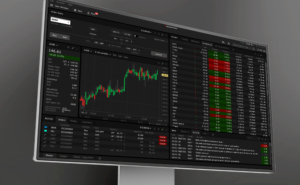Markets
The ECB kept its policy rates unchanged. A few members were already inclined to lower rates, but they eventually rallied behind the consensus. In it policy statement, the central bank altered its forward guidance preparing for a likely policy rate cut in June. “If the Governing’s Council’s updated assessment of the inflation outlook, the dynamics of underlying inflation and the strength of monetary policy transmission were to further increase its confidence that inflation is converging to the target in a sustained manner, it would be appropriate to reduce the current level of monetary policy restriction.” The central bank continues to follow a data-dependent – not Fed-dependent – and meeting-by-meeting approach to determine the appropriate level and duration of restriction. Lagarde refrained to committing to a specific policy rate path (beyond the June rate cut). EMU economic growth was weak in Q1 and risks to the economic outlook remain tilted to the downside. Tightness in the labour market is continuing to decline as witnessed by fewer job vacancies rather than high unemployment. Inflation is expected to fluctuate around current levels in the coming months and to then decline to target by mid next year, owing to weaker growth in labour costs, the unfolding effects of the restrictive monetary policy, and the fading impact of the energy crisis and the pandemic. Upside inflation risks come from higher energy and freight costs (geopolitics), wage dynamics and resilient profit margins. During the Q&A session, ECB Lagarde did what she does best: rereading parts of the monetary policy statement. She shied away from giving markets more color to the official declaration and managed to bore everyone out. In that respect, she managed to limit any market reactions/volatility so well done. Changes on the German yield curve currently range between flat (2-yr) and +2.1 bps (2-yr). The underperformance at the (very) long end of the curve suggests that markets remain vulnerable to a sell-off should the ECB overdo it on taking away policy restriction when the target hasn’t been reached yet. EUR/USD is a tad higher at 1.0750 with Lagarde also fending off questions on (the impact of) a weak currency should Fed and ECB monetary policy diverge.
US eco data again showed extremely low jobless claims (211k from 222k) while March producer prices rose by 0.2% M/M both for the headline and core measure). Both were in line with consensus. Tonight’s 30-yr Bond sale by the US Treasury is key. Weakness like in yesterday’s 10-yr auction suggests that the US Treasury sell-off can continue.
News & Views
Hungarian inflation unexpectedly accelerated from 0.7% m/m to 0.8% in March, leading to a smaller-than-anticipated moderation in y/y terms from 3.7% to 3.6%. A sharp drop in core inflation to 4.4% was mainly driven by favourable unprocessed food price base effects while other central bank core gauges remained at elevated levels well above 6%. Sticky services inflation (0.7% m/m) doesn’t bode well for future (core) CPI readings and neither do rising fuel prices which could rise another 2% m/m in April after adding 2.1% in March. KBC Economics forecasts inflation to pick up again in coming months towards an end-of-year target of around 5.5%. Combined with uncertainty related to ECB and Fed policy as well as domestic consumption picking up in 2024H2 this is expected to translate in a more cautious approach to monetary policy. Rate cuts could be downsized from 75 bps to 50 bps from April through June with a mere 50 bps of additional easing seen in the second half of this year (from 8.25% to 6.25%). The Hungarian forint marginally appreciated with EUR/HUF hovering near recent lows of 390. Hungarian swap yields skyrocket more than 20 bps. This move higher is shared by other CE countries though.
The OPEC in its monthly report stuck to the bullish demand forecasts made in the previous edition. The oil cartel continues to expect oil demand growing by 2.2mn barrels a day this year and by 1.8mn in 2025. “The robust oil demand outlook for the summer months warrants careful market monitoring, amid ongoing uncertainties, to ensure a sound and sustainable market balance,” OPEC said in the report, adding that there is a chance the world economy could do better than expected this year. Despite sounding optimistic on demand, OPEC recently confirmed the current 2.2mn b/d output curbs to remain in place at least through June. That, amongst others, has pushed oil prices significantly lower over the recent months. Brent oil is currently hovering north of the $90/b.









